Barr & Stroud CF49a
| Das CF49a mit der Seriennummer 115354 an der Seite des Prtismengehäuses könnte von 1951, aber zumindestens aus den 50er Jahren, stammen. Es ist ein Porro II Glas 12x50 mit der typischen runden Prismendose, welche aus Bakelit ist. Die Augenmuschel ist aus Kunststoff und das Okular mit +5 bis -5 Dioptrien gekennzeichnet, wobei die Skala bis 6 markiert ist. Das Gehäuseoberteil ist mit "British Patent 572.537" beschriftet. Dies weist auf eine bestimmte Art der Verkittung der Prismen und Sehfeldlinse hin (vgl. W. Reid 'We're certainly ...' S. 168). Der konische Objektivtubus (15,5cm lang) ist mit schwarzem Rauhlack ummantelt. Das Tubusende bildet eine aus Bakelit gefertigte Fassung, die auch als Blendschutz fungiert. Die Optiken sind blau vergütet. |
The CF49a with serial number 115354 written at the side of the prism housing could date from 1951, at least it is from the 50s. It is a porro II 12x50 glass with its typical round prism box made of Bakelite. The eye-cup is made of plastic; the ocular is marked from +5 to -5, the scale lines going up to 6. The top of the prism box is inscribed with "British Patent 572.537", hinting at a certain way of cementing prisms and ocular lens together (cf. W. Reid 'We're certainly ...' p. 168). The conical objective tube being 15.5cm long is covered with black rough paint. The end of the tube forms a ray shade frame, and is made of Bakelite as well. The optics are coated blue. |
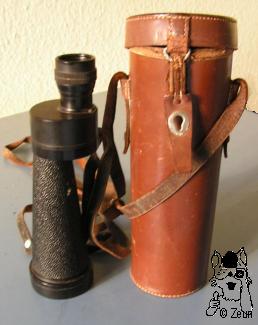
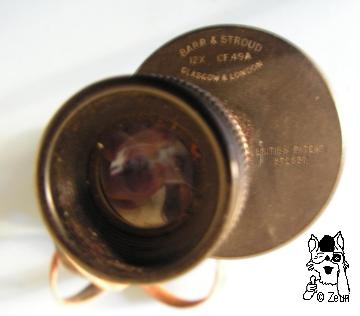
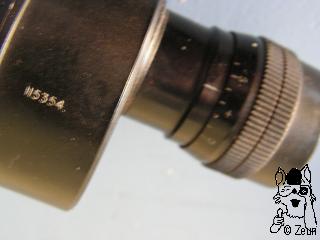
| Das CF49a wiegt 473g, es ist ca. 23,2cm lang, die Durchmesser der Augenmuschel, des Okulars, der Prismendose, des Objektivtubusanfangs und -endes sind wie folgt: 35mm, 28mm, 58mm, 34mm und 67mm. | The CF49a weighs 473g, is 23.2cm in length, and the diameters of the eye-cup, the ocular, the prism box, the start of the objective tube and its end are as follows: 35mm, 28mm, 58mm, 34mm and 67mm. |
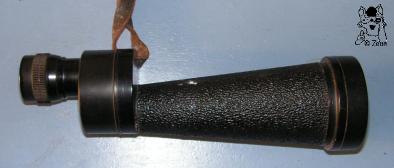
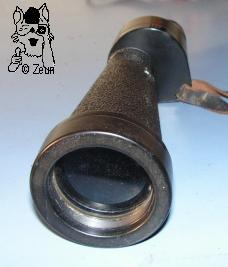
Fotos: Zeun

